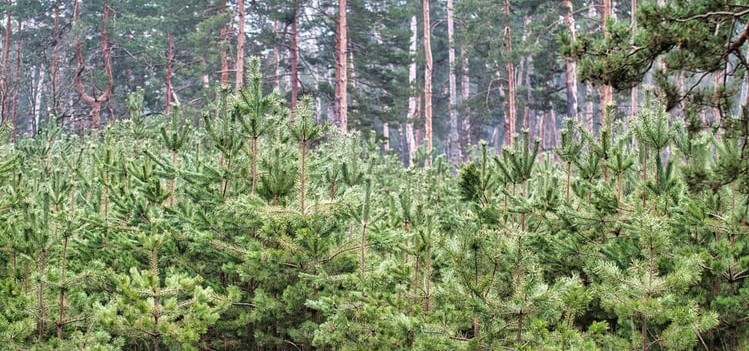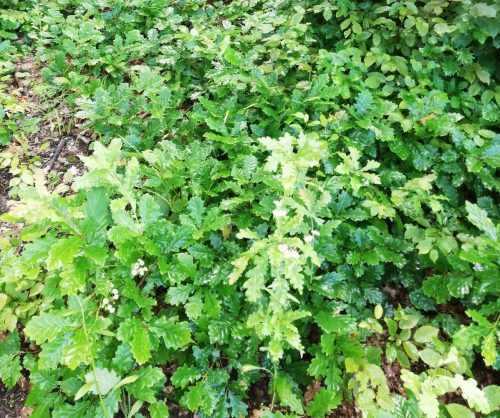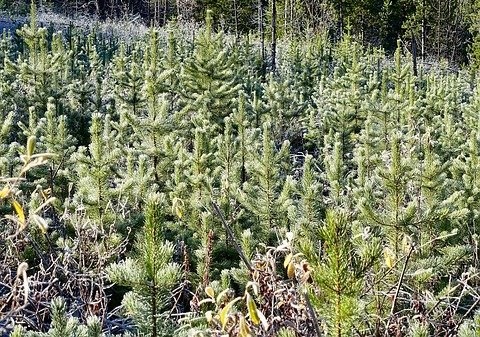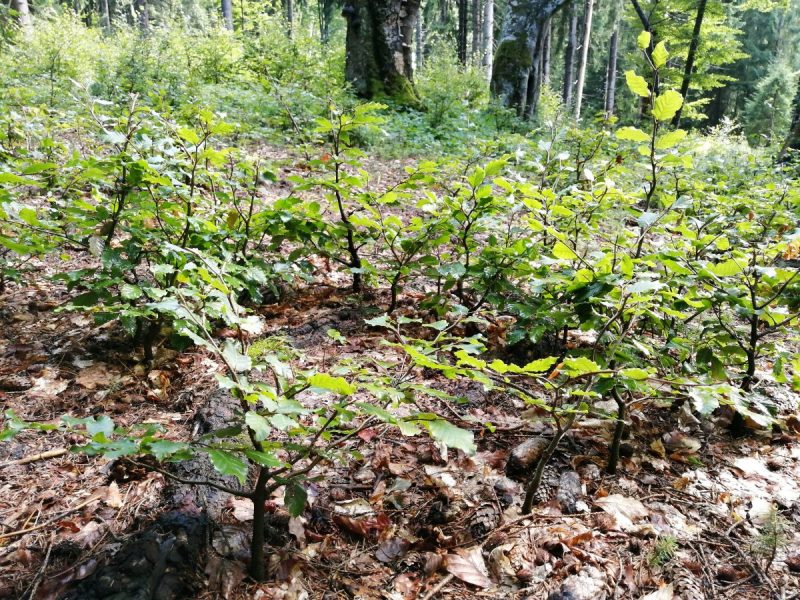Assisting the development of seedlings

Once the seedling layer is installed, it requires care and management interventions, silvicultural practices, in order to obtain a healthy, vigorous mature forest, with qualitative ecological and economic attributes. The development of seedlings is assisted by weeding, release cutting and respacing, cutting-back, stool shoot removal, and other silvicultural interventions.
Weeding
In natural or mixed regenerations, weeds, raspberries, and other species can exceed in height the newly installed seedling, hindering its development. The seedling is affected by shading, and competition occurs for water and nutrient reserves in the soil. The silvicultural intervention of weeding aims at releasing the seedlings from the invading weeds.
Recommendations:
- 1-2 cuttings per year are applied: the first one in June, the second one at the beginning of September (if necessary);
- the seddlings should not be injured;
- the cutten weeds are placed among the saplings (serving as protection against the growth of other weeds, and enriching the soil after decomposition);
- manual weeding or chemical weeding with selective herbicides can be performed.
Release cutting and respacing
Well-conformed and healthy specimens are promoted by these interventions and, at the same time, the density of the abundant natural regenerations is regulated. Release cutting and respacing is performed from the installation of the seedling layer until the average diameter is about 2 cm.
Release cutting and respacing can be carried out:
- manual (with pruners, axes, saws);
- mechanized (with mechanical saw);
- chemically (with systemic or contact arboricides).
Recommended products
-
You can find products on a different store
Change Store -
You can find products on a different store
Change Store -
You can find products on a different store
Change Store -
You can find products on a different store
Change Store -
You can find products on a different store
Change Store -
You can find products on a different store
Change Store -
You can find products on a different store
Change Store -
You can find products on a different store
Change Store -
You can find products on a different store
Change Store -
You can find products on a different store
Change Store -
You can find products on a different store
Change Store -
You can find products on a different store
Change Store -
You can find products on a different store
Change Store -
You can find products on a different store
Change Store -
You can find products on a different store
Change Store -
You can find products on a different store
Change Store -
You can find products on a different store
Change Store -
You can find products on a different store
Change Store -
You can find products on a different store
Change Store -
You can find products on a different store
Change Store -
You can find products on a different store
Change Store -
You can find products on a different store
Change Store -
You can find products on a different store
Change Store -
You can find products on a different store
Change Store
Release cutting and respacing is a selective silvicultural intervention. The following specimens are eliminated:
- broken and injured specimens;
- specimens affected by diseases and pests;
- badly conformed specimens, with defects, or with small crowns;
- specimens of unwanted species (with low economic and ecological value);
- rootsuckers (if germinative regeneration exists);
- some specimens from the excessively abundant groups.
Interventions are carried out when well-conformed specimens of valuable species become constrained by those of low value. The recommended period for manual or mechanical interventions is May 15 – June 15 and August 15 – September 30.
In the case of deciduous seedlings, it is recommended to break the top so that the seedling remains alive and grows downwards. Thus, the risk of sprouting is reduced, and the optimal development of the remaining seedlings is ensured. If the wood material resulting from these silvicultural interventions is harnessable (for brooms, braids, or other products), the specimens can be cut from the bottom.
In the case of softwoods, it is recommended to cut from the base and capitalize on the resulting wood material (Christmas trees, wreaths, or other products).
Cutting-back the broadleaved seedlings
It is performed on deciduous species, by cutting back the stem of seedlings to 1-2 cm from the soil surface. The purpose of this work is to “refresh” injured specimens and it is based on the ability of shooting (coppice). This silvicultural intervention is carried out in early spring, before entering the vegetation period.
Recommended products
-
You can find products on a different store
Change Store -
You can find products on a different store
Change Store -
You can find products on a different store
Change Store -
You can find products on a different store
Change Store -
You can find products on a different store
Change Store -
You can find products on a different store
Change Store -
You can find products on a different store
Change Store -
You can find products on a different store
Change Store -
You can find products on a different store
Change Store -
You can find products on a different store
Change Store -
You can find products on a different store
Change Store -
You can find products on a different store
Change Store -
You can find products on a different store
Change Store -
You can find products on a different store
Change Store -
You can find products on a different store
Change Store -
You can find products on a different store
Change Store -
You can find products on a different store
Change Store -
You can find products on a different store
Change Store -
You can find products on a different store
Change Store -
You can find products on a different store
Change Store -
You can find products on a different store
Change Store -
You can find products on a different store
Change Store -
You can find products on a different store
Change Store -
You can find products on a different store
Change Store
Removal of stool shoots
At a young age, seedlings from stool shooting grow faster than seedlings from seed. Trees originating from seeds have superior qualities to those derived from shoots: longer longevity, capacity to accumulate consistent wood mass – up to old ages, higher resistance to diseases and pests, etc. Therefore, in the case of regeneration with mixed origin (from seeds and shoots), the specimens from shoots are removed during silvicultural interventions. The work is performed twice a year, in June and August, for 2-3 years. During this time, the seedlings originating from seed exceed the critical period in which they can be constrained by stool shoots.
In addition, the development of seedlings can be stimulated by:
- soil mobilizations;
- keeping an optimal density of seedlings;
- filling in the gaps (spots without regeneration) with seedlings produced in forest nurseries;
- fencing areas with regeneration;
- application of deer repellent solutions, if necessary;
- application of fungicides and insecticides, if necessary.


















































































































































































































































































































































































































































